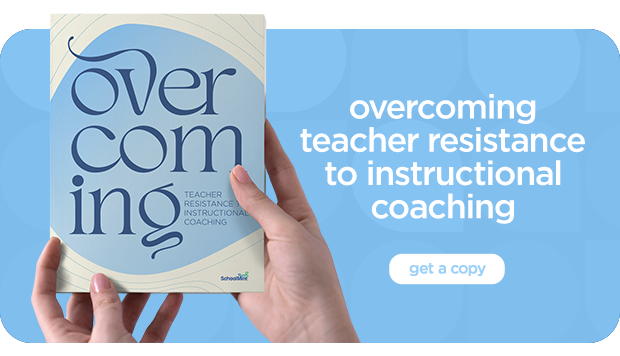6 Tactics to Getting Teachers Better Faster
Student success is the crucial end goal of improving teacher performance. It’s vital to grow teacher performance in the long term, but short-term student outcomes cannot be overlooked.
Luckily, with the right teacher coaching and classroom observation tools, school leaders can make drastic improvements in a relatively short amount of time.
Table of Contents
- Get Coaching Systems in Place
- Perform Effective Observations
- Calendar Out Observations and Meetings
- Plan and Lead Strong Post-Observation Feedback Meeting
- Create and Implement Specific, Concrete Action Steps
- Overcome Objections to Coaching
1. Get Coaching Systems in Place
Thorough preparation is crucial to the success of your coaching system. Before launching your program, outline how it will function in the day-to-day.
School leaders should select and design observation and meeting forms so that administrators, coaches, and teachers will know how feedback will be structured. It’s also important to set norms for how frequently instructional coaches will observe and meet with teachers.
To make sure your coaching system is collecting the right information, determine what data points you will track for each observation.
As influential educator Paul Bambrick-Santoyo notes in his book Leverage Leadership, data-driven instructional coaching allows educators to assess 80% of all instruction.
Tracking software with analytical capabilities can help you interpret this data and structure professional development according to each teacher’s individual needs.
2. Perform Effective Observations
To perform effective observations, keep a tight focus on specific, high-impact practices. Identify one to two successes in the classroom, and prescribe one high-leverage action step that will move the needle on teacher performance in the next week.
To assist the teacher in implementing a change, jot down quotes or take a video of what you observed.
Capturing evidence related to your action step will make it easy for the teacher to understand the gap between their current practices and the improved approach that the action step is designed to implement.
Lastly, create a rubric to guide your observation, but also be mindful of what the rubric cannot capture.
3. Calendar Out Observations, Debrief Meetings, and Weekly Data Meetings
Incorporate teacher coaching into your schedule.
Because school leaders have a vast array of responsibilities that all compete for attention, it’s crucial to be intentional about making time to visit classrooms or hold meetings.
If funding permits, school leaders should consider hiring instructional coaches to share the work.
Alternatively, schools can adjust the schedules of veteran teachers to allow an additional block of time each day to observe, share feedback, and mentor new teachers.
4. Plan for and Lead a Strong Post-Observation Feedback Meeting
Script your meeting ahead of time to figure out how you will facilitate growth.
To create a trusting dynamic that invites honest dialogue, lead with the positive. Kick off your meeting with a review of what is going well in the classroom. This will provide encouragement and enhance teacher confidence.
Next, ask probing questions that’ll invite reflection and guide the teacher to their action step. Formulate an action step with the teacher, and agree on how it will be tracked.
Then focus on how to implement the action step and discuss when the next observation will occur.
5. Create and Implement Specific, Concrete Action Steps
Effective action steps are bite-sized and high-leverage. Being bite-sized enables the teacher to master the step in a week. A high-leverage action step is the single most important thing the teacher can do to improve classroom outcomes.
You can learn more about effective action steps in Get Better Faster: What is it, and How Does it Work?
6. Overcome Objections to Coaching by Creating a Culture of Improvement — Not a Culture of Evaluation
“Glows and grows” are an excellent way to introduce a coaching culture to your school.
To start out, give each teacher a glow (something they’ve done well) and a grow (something that needs improvement) every week. This will also integrate feedback into your school’s routine, which will enable a smoother transition into coaching.
This is also an area where the humble yellow sticky note can help. Learn more in It Starts with a Sticky Note: Building a Coaching Culture in Your School.
Above all, emphasize that feedback is key to progress. As best-selling author Daniel Pink notes in his book Drive, feelings of progress are the biggest motivator in the workplace.
To head off objections to this transition, emphasize shared decision-making, consensus, collaboration, and modeling.
In the long run, this will facilitate greater change than trying to single-handedly impose new approaches.
You can learn more about overcoming coaching objections in our free downloadable guide, Overcoming Teacher Resistance to Instructional Coaching:
SchoolMint Grow Can Help
At SchoolMint, our main motivator is student success. To learn about how we support schools throughout the teacher coaching process, learn more on our site.
Share this
You May Also Like
These Related Stories

How Teacher Coaching Can Transform Your School

ESF Lever 5: Effective Instruction in Texas Districts



